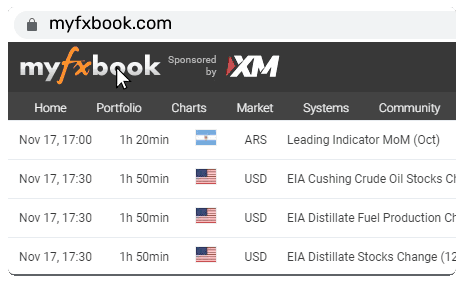Yen Gains Strength as U.S. Job Market Shows Signs of Cooling
The Japanese yen has been gaining strength during Asian trading hours, causing the USD/JPY pair to dip to 143.333. This shift in momentum is largely driven by a weaker U.S. job market, as shown by the latest U.S. Job Openings and Labor Turnover Survey (JOLTS). The report came in below expectations, raising concerns that the upcoming U.S. nonfarm payrolls report might show a similar decline in job growth.
U.S. Labor Market Slowing Down
According to the JOLTS report, job openings in the U.S. fell to 7.673 million in July, marking the lowest level since early 2021. This suggests that the once-tight labour market is loosening. Fewer job openings hint that companies are pulling back on hiring due to economic uncertainty, slower The Japanese yen has been gaining strength during Asian trading hours, causing the USD/JPY pair to dip to 143.333. This shift in momentum is largely driven by a weaker U.S. job market, as shown by the latest U.S. Job Openings and Labor Turnover Survey (JOLTS). The report came in below expectations, raising concerns that the upcoming U.S. nonfarm payrolls report might show a similar decline in job growth.
U.S. Labor Market Slowing Down
According to the JOLTS report, job openings in the U.S. fell to 7.673 million in July, marking the lowest level since early 2021. This suggests that the once-tight labour market is loosening. Fewer job openings hint that companies are pulling back on hiring due to economic uncertainty, slower demand, and higher borrowing costs thanks to the Federal Reserve’s ongoing rate hikes.
Hiring and quit rates also stayed at their recent lows, suggesting that the job market’s energy is fading. While layoffs haven’t spiked, the hiring slowdown could mean that companies are adopting a wait-and-see approach, holding off on expanding their workforce until the economy looks more stable. This trend points to a labour market adapting to softer conditions but not yet in crisis mode.
The cooling job market could also help ease inflation, as fewer job openings reduce wage pressures. However, since layoffs haven’t increased much, this slowdown seems more like a gradual cooling rather than a rapid downturn. For policymakers, this suggests the U.S. economy may still be on track for a "soft landing," where inflation slows without a dramatic rise in unemployment.
Impact on Federal Reserve Decisions
The weak JOLTS data has shifted expectations for the Federal Reserve’s next move. Investors are now betting that the Fed could cut rates by as much as 50 basis points (bps) at its next meeting. Currently, markets are pricing in around 36bps of rate cuts ahead of the important nonfarm payrolls data, which will be released on Friday. If that report also shows a slowdown in hiring, it will increase the chances of a larger rate cut by the Fed.
However, for the Fed to make such a significant cut, the nonfarm payrolls report would need to show a noticeable decline in job growth. This would signal that the economy is slowing down more than expected, forcing the Fed to take stronger action to prevent a deeper downturn.
At the same time, the Fed is walking a tightrope. A bigger rate cut could boost demand, but it also risks stoking inflation, especially if wages continue to rise despite the lower number of job openings.
Japanese Data Pushes Yen Higher
Meanwhile, in Japan, the yen is getting a boost from strong domestic economic data. Japan’s latest labour cash earnings report showed wages grew by 3.6% in July, much higher than the 2.9% expected. Even more impressively, the Bank of Japan’s (BoJ) preferred wage metric showed an increase of 4.8%. This indicates that inflation in Japan is spreading beyond energy and import prices, potentially leading to more sustainable price growth.
Base pay in Japan also rose by 3.0% year-over-year, the highest increase seen in this economic cycle. This is crucial for the BoJ, which has been trying to generate stable inflation above 2% for years. The recent wage growth could support domestic demand and help Japan finally reach its inflation targets.
Outlook for BoJ Policy
BoJ board member Hajime Takata has hinted that if these inflation trends continue, the central bank might start rolling back its ultra-loose monetary policy. For Japan, which has maintained negative interest rates to boost growth, this would be a significant shift.
If the BoJ does tighten its policy, the yen will likely strengthen further, becoming more attractive to investors looking for higher returns. This is in stark contrast to the U.S., where rate cuts are being considered.
The economic differences between the U.S. and Japan are pushing the yen higher against the dollar. As the U.S. labour market cools and the Fed leans toward easing monetary policy, the dollar weakens. Meanwhile, Japan’s strong wage growth and the potential for tighter BoJ policy are supporting the yen.
If these trends persist, the yen could continue to strengthen, with the USD/JPY pair facing further downward pressure. The only factors that could reverse this trend are surprisingly strong U.S. economic data or a more cautious approach by the Fed in its upcoming policy decisions.
demand, and higher borrowing costs thanks to the Federal Reserve’s ongoing rate hikes.
Hiring and quit rates also stayed at their recent lows, suggesting that the job market’s energy is fading. While layoffs haven’t spiked, the hiring slowdown could mean that companies are adopting a wait-and-see approach, holding off on expanding their workforce until the economy looks more stable. This trend points to a labour market adapting to softer conditions but not yet in crisis mode.
The cooling job market could also help ease inflation, as fewer job openings reduce wage pressures. However, since layoffs haven’t increased much, this slowdown seems more like a gradual cooling rather than a rapid downturn. For policymakers, this suggests the U.S. economy may still be on track for a "soft landing," where inflation slows without a dramatic rise in unemployment.
Impact on Federal Reserve Decisions
The weak JOLTS data has shifted expectations for the Federal Reserve’s next move. Investors are now betting that the Fed could cut rates by as much as 50 basis points (bps) at its next meeting. Currently, markets are pricing in around 36bps of rate cuts ahead of the important nonfarm payrolls data, which will be released on Friday. If that report also shows a slowdown in hiring, it will increase the chances of a larger rate cut by the Fed.
However, for the Fed to make such a significant cut, the nonfarm payrolls report would need to show a noticeable decline in job growth. This would signal that the economy is slowing down more than expected, forcing the Fed to take stronger action to prevent a deeper downturn.
At the same time, the Fed is walking a tightrope. A bigger rate cut could boost demand, but it also risks stoking inflation, especially if wages continue to rise despite the lower number of job openings.
Japanese Data Pushes Yen Higher
Meanwhile, in Japan, the yen is getting a boost from strong domestic economic data. Japan’s latest labour cash earnings report showed wages grew by 3.6% in July, much higher than the 2.9% expected. Even more impressively, the Bank of Japan’s (BoJ) preferred wage metric showed an increase of 4.8%. This indicates that inflation in Japan is spreading beyond energy and import prices, potentially leading to more sustainable price growth.
Base pay in Japan also rose by 3.0% year-over-year, the highest increase seen in this economic cycle. This is crucial for the BoJ, which has been trying to generate stable inflation above 2% for years. The recent wage growth could support domestic demand and help Japan finally reach its inflation targets.
Outlook for BoJ Policy
BoJ board member Hajime Takata has hinted that if these inflation trends continue, the central bank might start rolling back its ultra-loose monetary policy. For Japan, which has maintained negative interest rates to boost growth, this would be a significant shift.
If the BoJ does tighten its policy, the yen will likely strengthen further, becoming more attractive to investors looking for higher returns. This is in stark contrast to the U.S., where rate cuts are being considered.
The economic differences between the U.S. and Japan are pushing the yen higher against the dollar. As the U.S. labour market cools and the Fed leans toward easing monetary policy, the dollar weakens. Meanwhile, Japan’s strong wage growth and the potential for tighter BoJ policy are supporting the yen.
If these trends persist, the yen could continue to strengthen, with the USD/JPY pair facing further downward pressure. The only factors that could reverse this trend are surprisingly strong U.S. economic data or a more cautious approach by the Fed in its upcoming policy decisions.
This content may have been written by a third party. ACY makes no representation or warranty and assumes no liability as to the accuracy or completeness of the information provided, nor any loss arising from any investment based on a recommendation, forecast or other information supplies by any third-party. This content is information only, and does not constitute financial, investment or other advice on which you can rely.



















